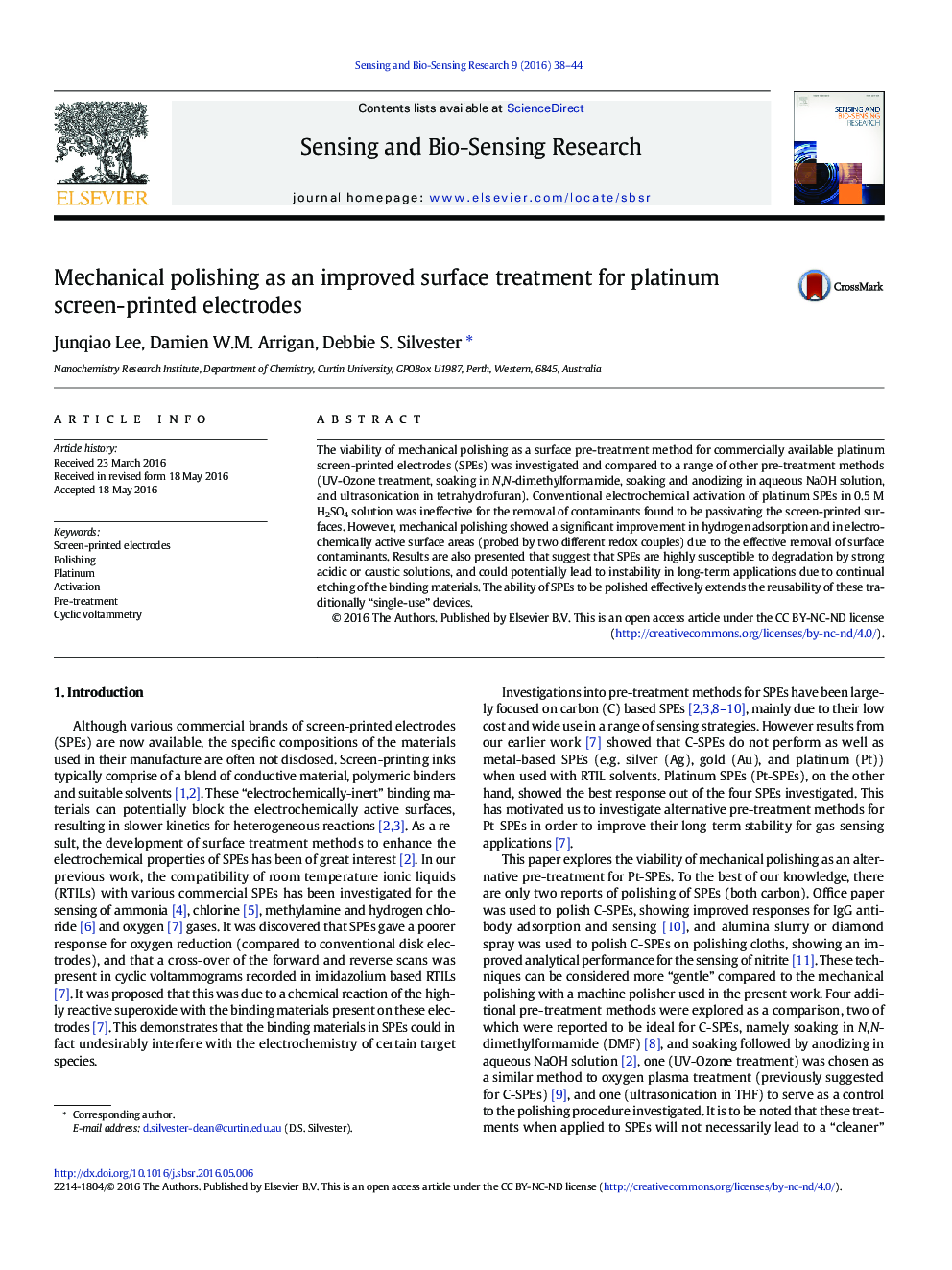| Article ID | Journal | Published Year | Pages | File Type |
|---|---|---|---|---|
| 807763 | Sensing and Bio-Sensing Research | 2016 | 7 Pages |
The viability of mechanical polishing as a surface pre-treatment method for commercially available platinum screen-printed electrodes (SPEs) was investigated and compared to a range of other pre-treatment methods (UV-Ozone treatment, soaking in N,N-dimethylformamide, soaking and anodizing in aqueous NaOH solution, and ultrasonication in tetrahydrofuran). Conventional electrochemical activation of platinum SPEs in 0.5 M H2SO4 solution was ineffective for the removal of contaminants found to be passivating the screen-printed surfaces. However, mechanical polishing showed a significant improvement in hydrogen adsorption and in electrochemically active surface areas (probed by two different redox couples) due to the effective removal of surface contaminants. Results are also presented that suggest that SPEs are highly susceptible to degradation by strong acidic or caustic solutions, and could potentially lead to instability in long-term applications due to continual etching of the binding materials. The ability of SPEs to be polished effectively extends the reusability of these traditionally “single-use” devices.
Graphical abstractFacile mechanical polishing of screen printed electrodes (SPEs) was found to increase the electrochemically active surface area by the removal of surface passivants (e.g. binders).Figure optionsDownload full-size imageDownload as PowerPoint slide
